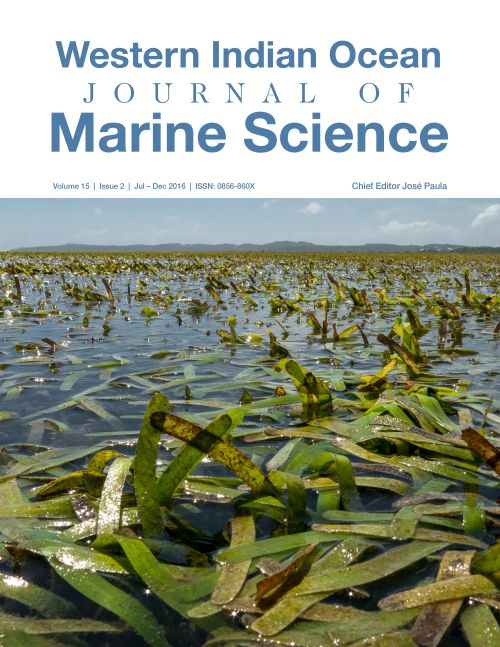Main Article Content
Reproductive biology and body condition of exploited populations of Emperor Angelfish, Pomacanthus imperator (Bloch, 1787) along the Kenyan Coast
Abstract
A substantial proportion (in terms of value and quantity) of the Pomacanthus imperator catch on the Kenyan coast are traded, and the species is also harvested as food in the artisanal fishery. However information on their reproductive biology is scanty. The overall sex ratio differed significantly from 1:1 according to chi-square test (p<0.05). Sizes at maturity (L50) were estimated to be 25cm and 28cm TL for females and males respectively. Fecundity was estimated to be in the range of 17,790-266,472 with a Mean ±SE of 79,353±11,747, and was linearly related to total length and ovary weight. March-April was the main period of reproductive activity based on gonad somatic indices and monthly proportion of mature individuals. The LWR indicated isometric growth both in males and females of P. imperator, as the allometric coefficient b values were not significantly different from the expected isometric value of 3 (Student’s t-test; p=0.12). Relative condition factor did not vary significantly between the months sampled. The reproductive parameters obtained from this study provide some baseline information for management of this species which has proven to be highly vulnerable to depletion due to overfishing.






